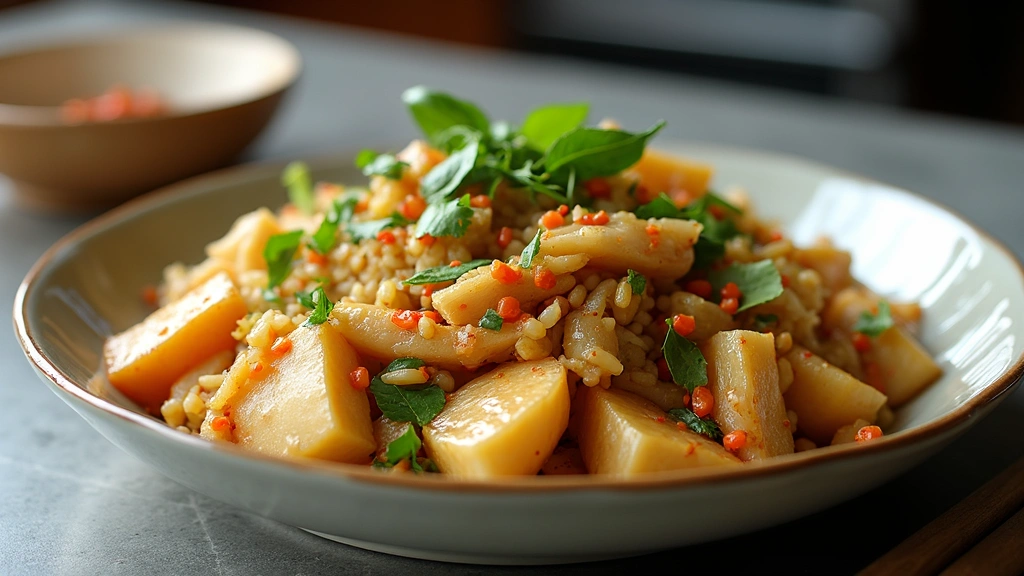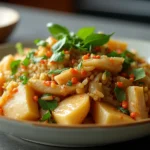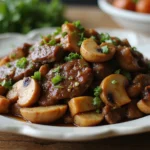Easy Chinese Chicken Cabbage Stir Fry is the perfect solution for busy weeknights when time is of the essence but flavor cannot be compromised.
This dish combines tender chicken with crisp cabbage and vibrant vegetables, all coated in a savory sauce that brings everything together beautifully.
Inspired by traditional Chinese cooking, it offers a delightful balance of textures and tastes that can satisfy the whole family.
With minimal prep and cooking time, you can have a wholesome meal on the table in no time, making it a staple in my kitchen.
The History and Cultural Significance
• Chinese Chicken Cabbage Stir Fry traces its origins to the bustling street markets of China, where quick and nutritious meals were a necessity for busy families.
• The dish evolved over decades as chefs began to incorporate seasonal vegetables and regional spices, eventually becoming the beloved version we know today.
• In Chinese culture, stir-frying symbolizes the speed of life and the importance of fresh ingredients, making it a common dish during family gatherings.
• While many variations exist across different regions, the authentic version maintains a focus on fresh vegetables and balanced flavors that set it apart from imitations.
Recipe Overview
Nutritional Information (per serving)
Ingredients
Essential Equipment Guide
Wok: A wok is essential for achieving the high heat needed for quick stir-frying. Its shape allows for even cooking and excellent heat distribution. If you don’t have a traditional wok, a large skillet can be a suitable alternative, but be sure it has a heavy bottom to retain heat.
Chef’s Knife: A sharp chef’s knife is crucial for efficiently chopping vegetables and chicken. Look for one that feels comfortable in your hand and retains its edge well. A good knife will help ensure uniform cuts, which promotes even cooking.
Spatula or Stirring Spoon: A sturdy spatula or wooden spoon is important to avoid scratching the wok and to handle the ingredients gently. A heat-resistant silicone spatula works well to withstand high temperatures while stirring.
Preparation Methods
Marinating Chicken: Marinating the chicken in soy sauce and cornstarch not only tenderizes the meat but also infuses it with flavor. To marinate, combine the chicken with the marinade and let it sit for at least 15 minutes. This step can be done ahead of time to save prep time later.
Stir-Frying Vegetables: Stir-frying involves cooking food quickly at high heat while stirring constantly. This technique helps to retain the vegetables’ color, flavor, and nutrients. Ensure your wok or skillet is preheated before adding the vegetables for the best results.
Creating the Sauce: Mixing the sauce components before cooking allows for a uniform flavor distribution. Combine soy sauce, oyster sauce, sesame oil, ginger, and garlic in a bowl. This ensures that the flavors meld together before being added to the stir-fried ingredients.
Step 1: Prepare Ingredients
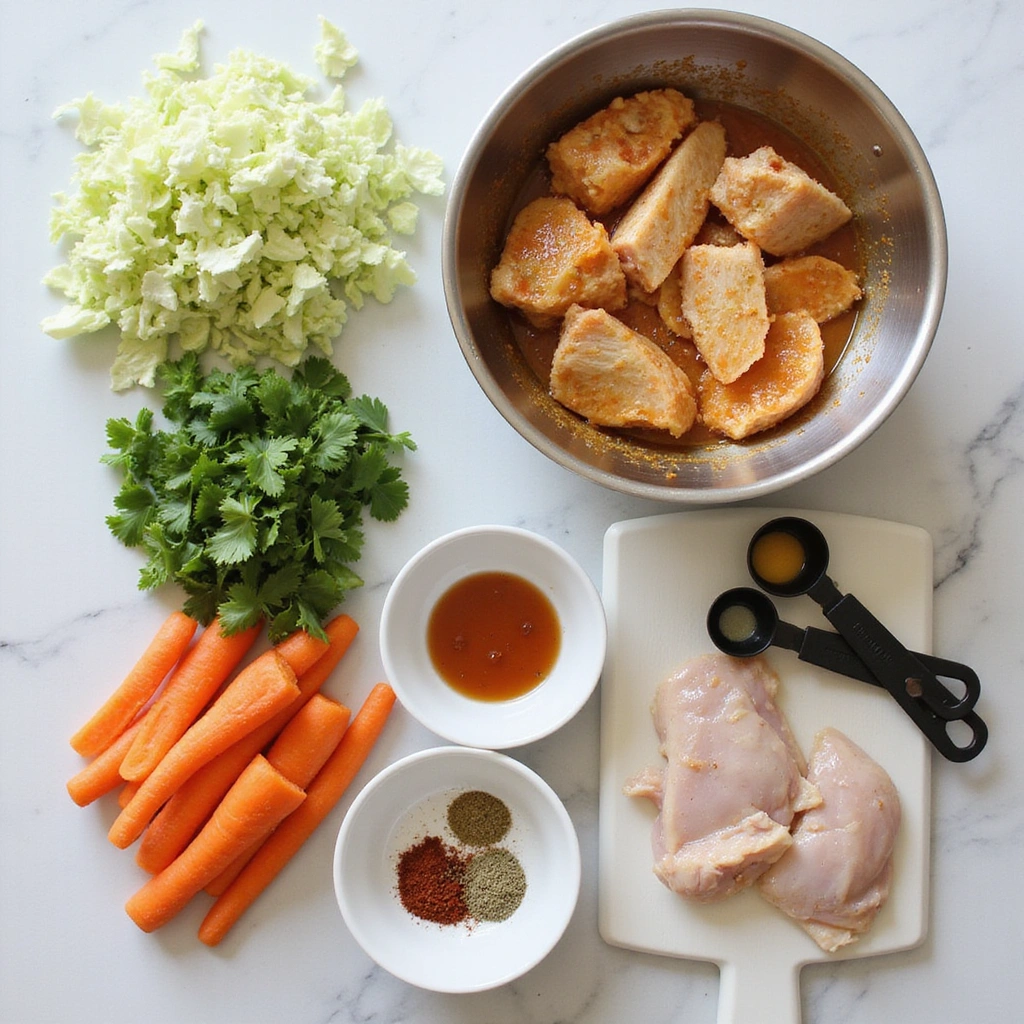
Start by gathering all your ingredients on a clean surface.
Rinse and chop the vegetables as needed, ensuring they are uniform in size for even cooking.
Slice the chicken into thin strips, and mix it with soy sauce and cornstarch to marinate.
This preparation will save you time and make the cooking process smoother.
Step 2: Heat the Wok
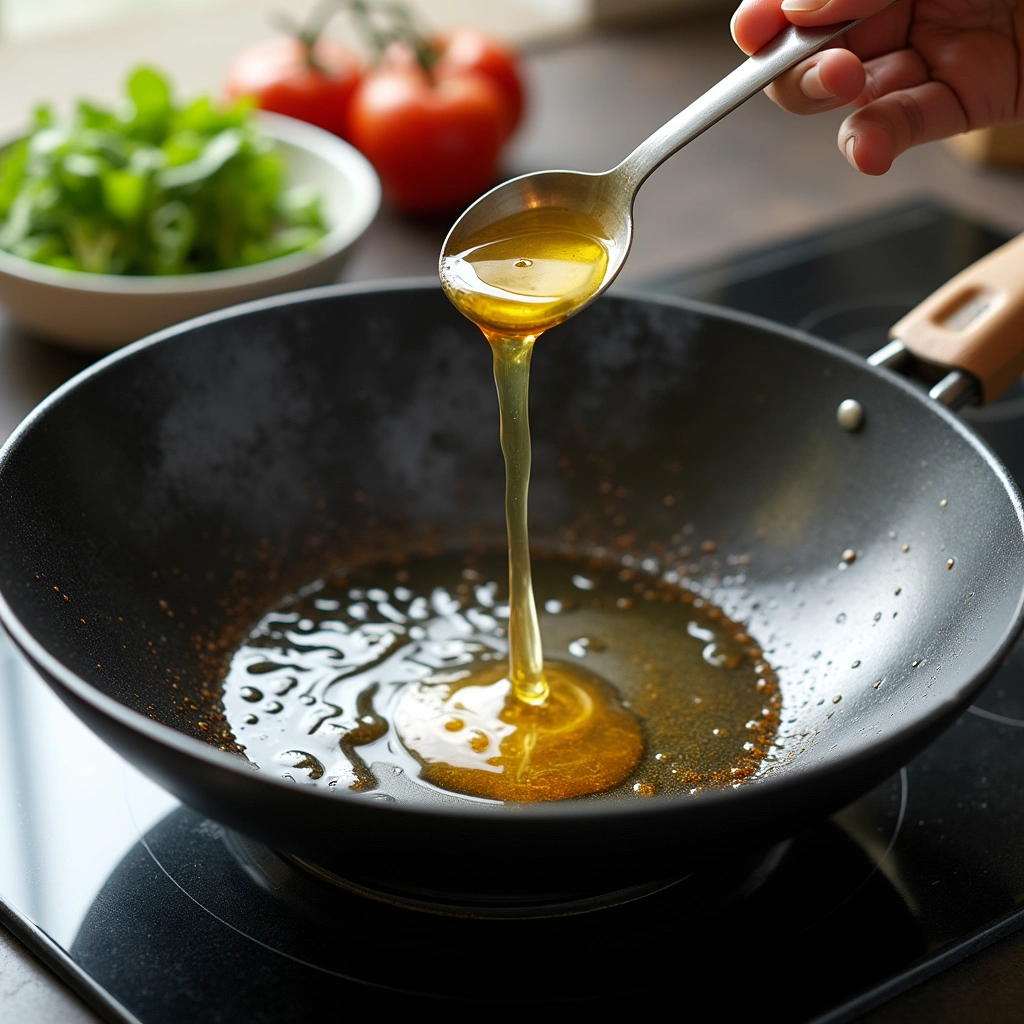
Place your wok on the stove and turn the heat to high.
Allow the wok to heat up for a couple of minutes until it starts to smoke slightly.
This high temperature is crucial for achieving that signature stir-fried flavor.
Swirl in a tablespoon of oil, ensuring it coats the bottom evenly.
Step 3: Cook the Chicken
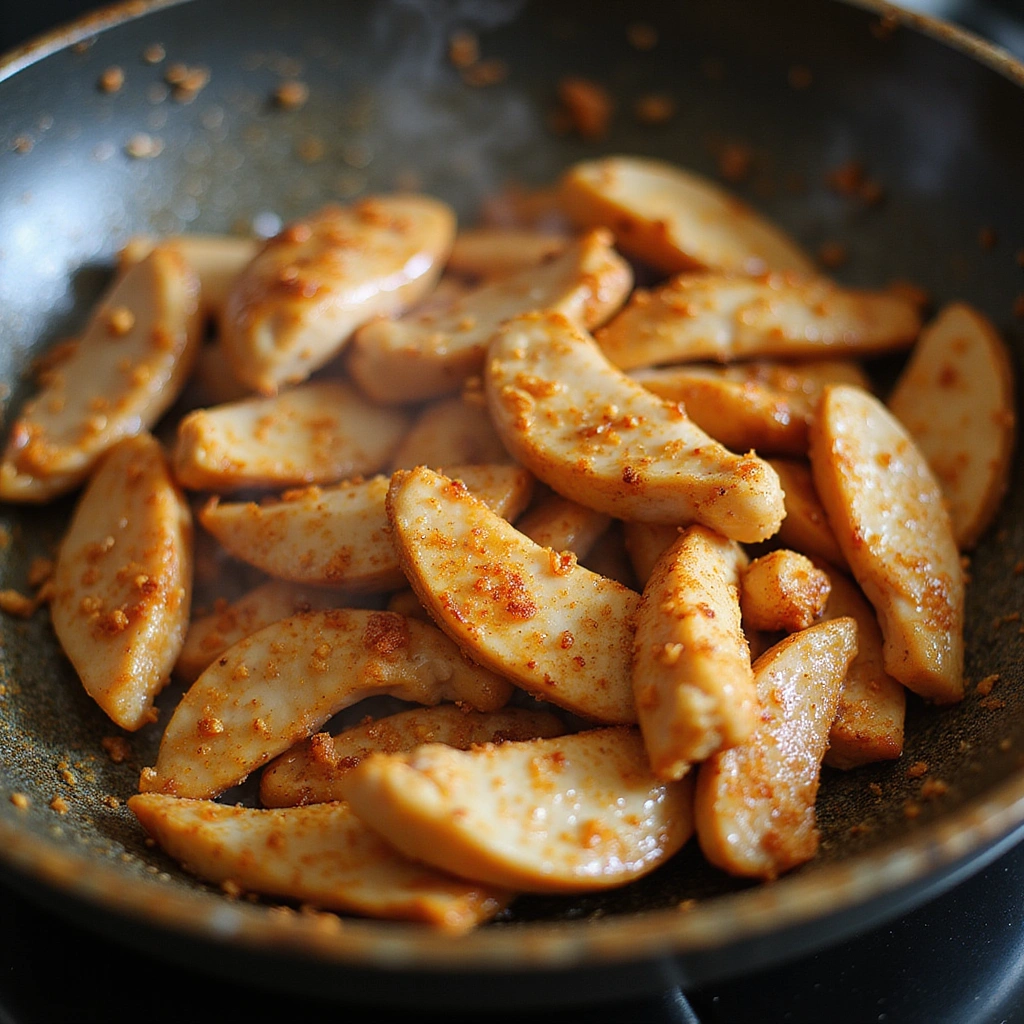
Add the marinated chicken to the hot wok in a single layer.
Let it sear without stirring for about 2 minutes to develop a nice golden color.
Afterward, stir-fry the chicken until it is fully cooked and no longer pink, about 3-4 minutes.
This step locks in moisture and flavor, ensuring juicy chicken pieces.
Step 4: Add Vegetables
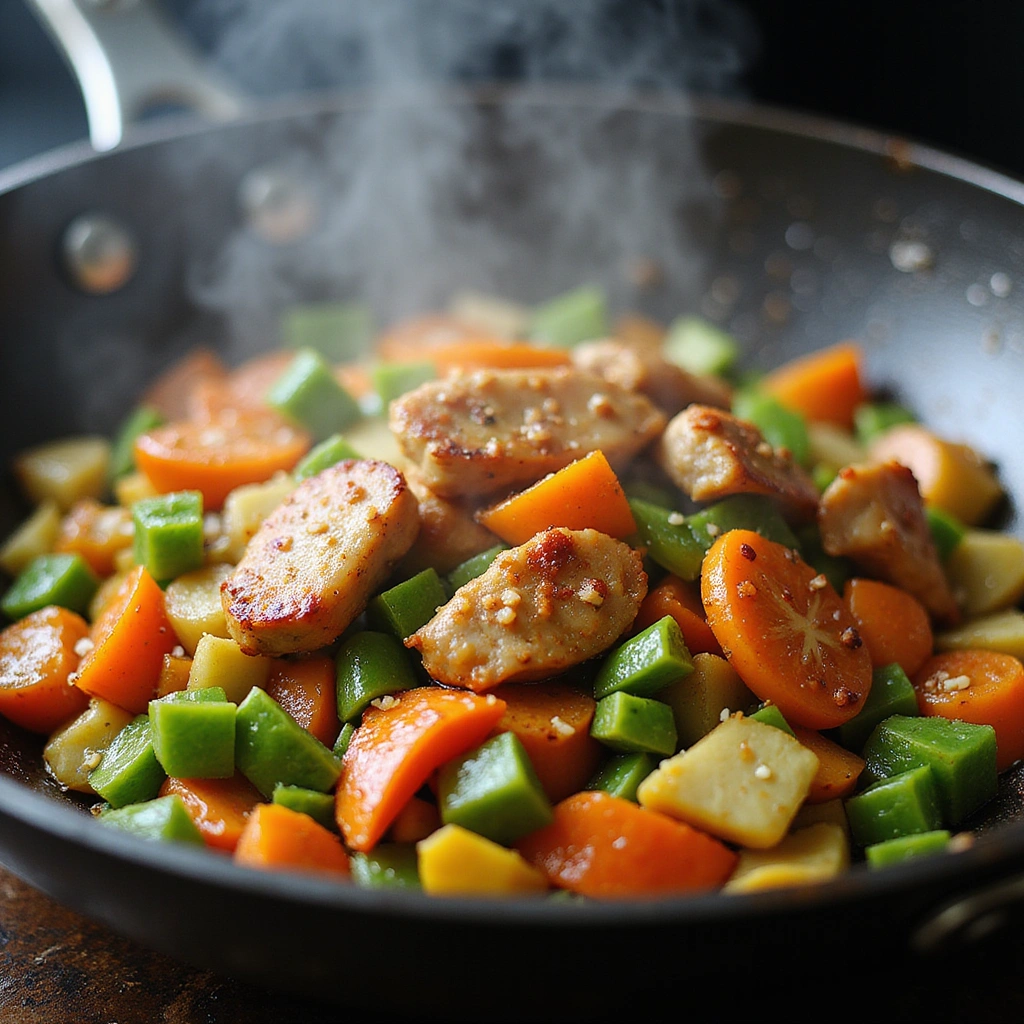
Once the chicken is cooked, add the shredded cabbage, bell pepper, and carrots to the wok.
Stir-fry the vegetables for about 3-4 minutes until they are tender-crisp.
Keep the heat high and stir constantly to ensure even cooking and avoid burning.
Look for vibrant colors and a slight crunch in the vegetables.
Step 5: Pour in the Sauce
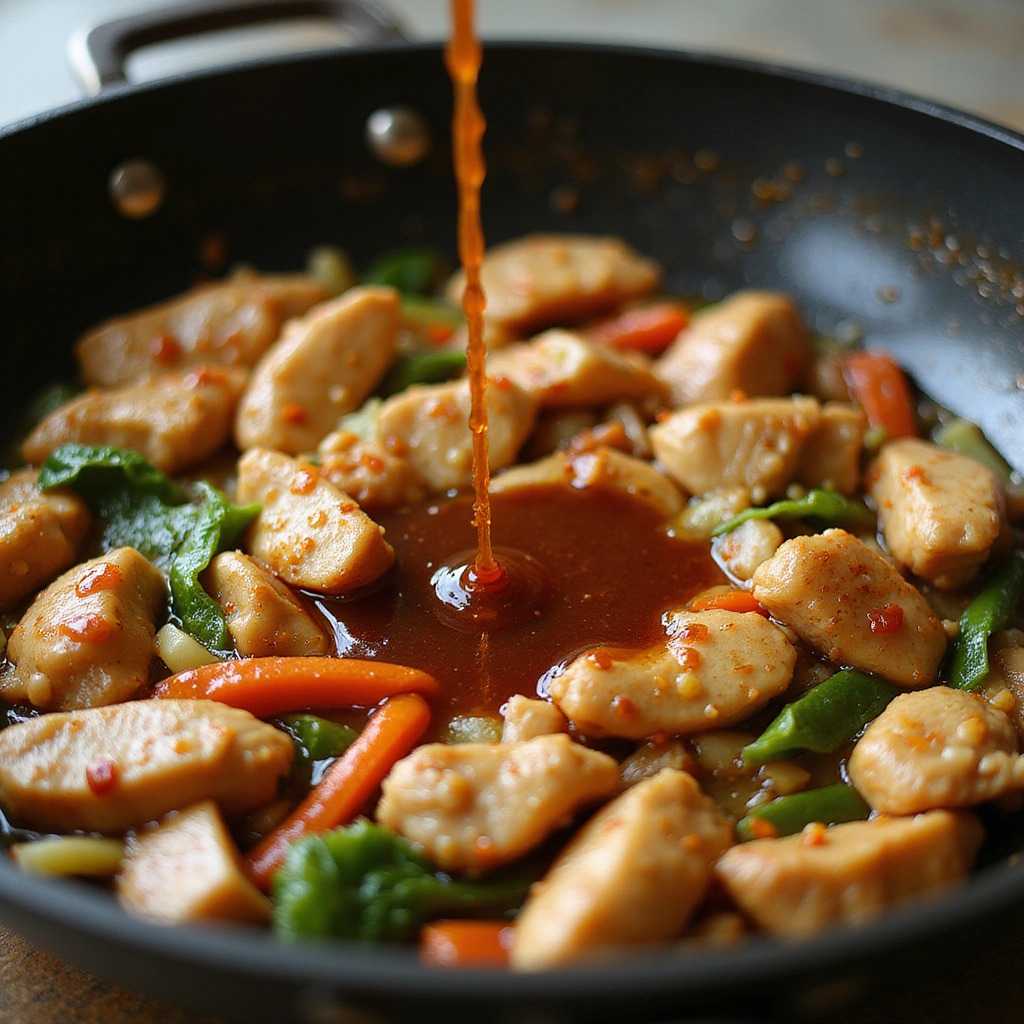
In a small bowl, whisk together the soy sauce, oyster sauce, sesame oil, ginger, and garlic.
Pour this sauce over the stir-fried chicken and vegetables in the wok.
Stir well to coat all the ingredients evenly with the sauce, allowing it to heat through for about 1-2 minutes.
The sauce should become slightly thick as it clings to the chicken and vegetables.
Step 6: Final Touches

Taste the stir-fry and adjust seasoning if necessary, adding more soy sauce or salt to your preference.
Add the chopped green onions just before serving for a fresh bite.
Toss everything together one last time to ensure even distribution of flavors.
The dish should smell fragrant and look colorful with a glossy finish.
Step 7: Serve
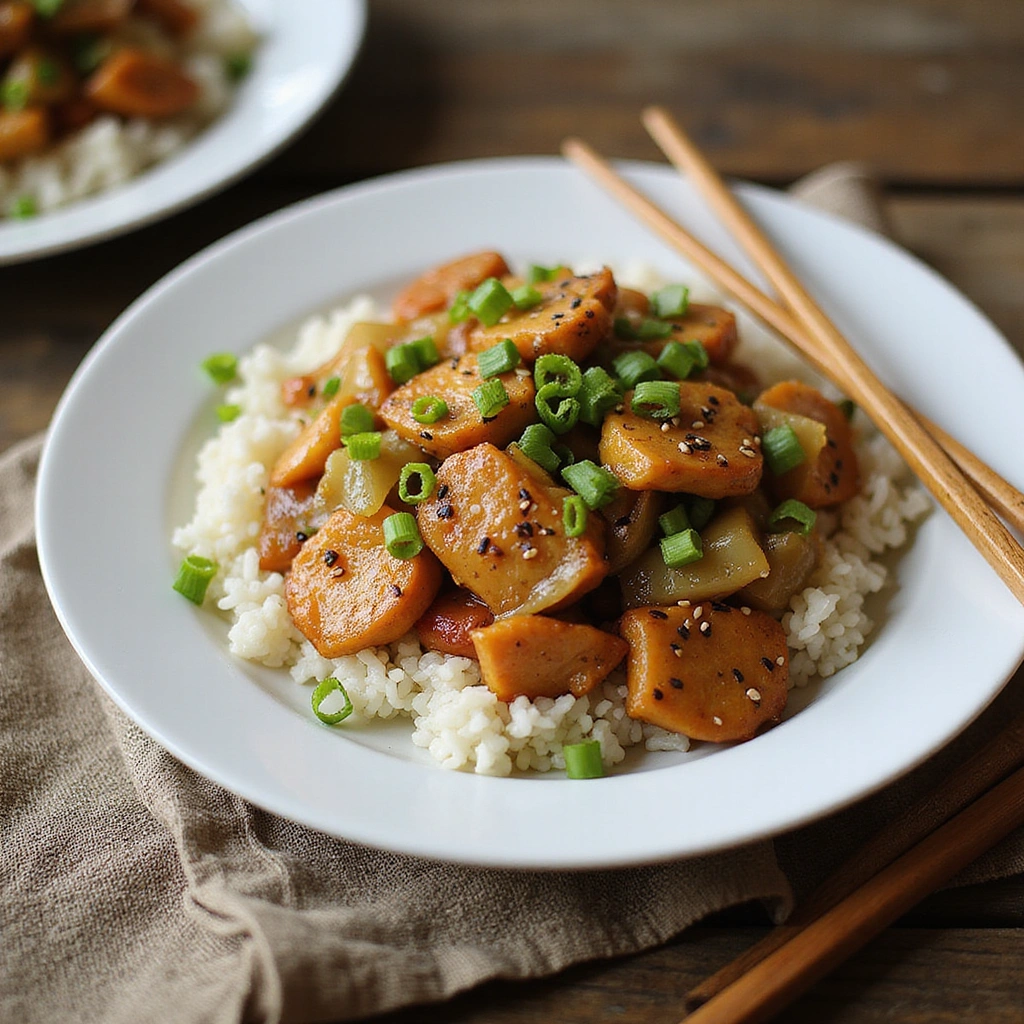
Transfer the stir-fry to a serving dish or individual bowls.
Serve it hot, ideally over a bed of rice or noodles for a complete meal.
Garnish with additional green onions or sesame seeds for visual appeal.
Encourage your family or guests to enjoy this quick and delicious meal.
Critical Timing and Temperature Guide
Cooking Chicken: Cook the chicken for a total of about 5-7 minutes, ensuring it reaches an internal temperature of 165°F. Look for a golden-brown color and no pink juices to indicate it’s done. Avoid overcrowding the pan, as this can lead to steaming rather than searing.
Stir-Frying Vegetables: Stir-fry the vegetables for around 3-4 minutes on high heat until they are tender-crisp. Keep them moving in the wok to prevent burning, and look for vibrant colors as a sign of doneness. Do not overcook, as you want to maintain their crunch.
Final Sauce Addition: After adding the sauce, allow it to simmer for 1-2 minutes until it thickens slightly. The glossy appearance and fragrant aroma indicate that it’s ready to be served. Be cautious not to overcook, as this can lead to a loss of flavor.
Pro Tips for Chinese Chicken Cabbage Stir Fry For Busy Nights
• Ingredient Selection: Use fresh, seasonal vegetables for the best flavor and texture. Opt for organic chicken for a more tender and flavorful dish.
• Preparation Secret: Marinating chicken in cornstarch not only tenderizes it but also helps create a nice crust when cooked.
• Temperature Management: Ensure your wok is preheated to high before adding ingredients to achieve that signature stir-fry flavor.
• Texture Enhancement: Stir-fry the vegetables quickly on high heat to maintain their crispness and vibrant color.
• Flavor Layering: Start with the aromatics like garlic and ginger in the oil before adding other ingredients for a deeper flavor.
• Make-Ahead Strategies: Pre-chop vegetables and marinate the chicken the night before to save time on busy nights.
• Restaurant-Quality Finishing Touches: A sprinkle of sesame seeds or fresh herbs just before serving can elevate the dish visually and in flavor.
• Equipment Optimization: A well-seasoned wok is indispensable; it improves the non-stick properties and adds flavor with each use.
Troubleshooting Common Issues
• Chicken is Dry: This can happen if the chicken is overcooked. To prevent this, ensure high heat and cook just until no longer pink. Consider marinating longer for moisture retention.
• Vegetables are Soggy: Overcooking leads to soggy vegetables. Stir-fry quickly on high heat, and add them after the chicken is cooked to maintain their crunch.
• Flavor is Bland: If the dish lacks flavor, increase the soy sauce or add a splash of vinegar for acidity. Taste as you go to adjust seasoning.
• Too Saucy: If the stir-fry is swimming in sauce, reduce the amount of sauce used or increase the cooking time to allow it to thicken.
• Sticky Ingredients: Ingredients sticking to the wok can indicate insufficient oil or heat. Preheat your wok and ensure it’s well-oiled before adding ingredients.
Variations and Regional Differences
• Szechuan Style: This variation adds a spicy kick with Szechuan peppercorns and chili oil, making it a favorite for those who enjoy heat.
• Mongolian Chicken: A sweeter version that incorporates hoisin sauce and often includes additional vegetables like broccoli and snap peas.
• Vegetarian Version: Substitute chicken with tofu or tempeh, and use vegetable broth for the sauce to create a hearty vegetarian alternative.
• Modern Interpretations: Some recipes incorporate quinoa or brown rice for a healthier twist, maintaining the traditional flavors while upgrading the nutrition.
Food Science Behind the Recipe
• Maillard Reaction: This chemical reaction occurs when proteins are cooked at high temperatures, creating the delicious browned bits on chicken. Understanding this helps achieve better flavor and texture.
• Emulsification: When sauce ingredients are combined, they blend to create a cohesive sauce that clings to the chicken and vegetables, enhancing flavor.
• Caramelization: The natural sugars in vegetables caramelize when cooked, adding depth and sweetness to the dish. Knowing when to add vegetables helps maximize this effect.
Frequently Asked Questions
What’s the most common mistake people make when preparing Chinese Chicken Cabbage Stir Fry? The most common mistake is overcrowding the pan, which leads to steaming rather than stir-frying. Always cook in batches if necessary to allow for proper searing.
Can I prepare components of this dish in advance? Yes, you can chop vegetables and marinate the chicken up to a day in advance. Store them separately in airtight containers in the refrigerator.
How do I adapt this recipe for dietary restrictions? To make this dish gluten-free, use tamari instead of soy sauce, and for a low-carb version, substitute vegetables with zucchini noodles.
What’s the best way to store and reheat leftovers? Store leftovers in an airtight container in the refrigerator for up to 3 days. Reheat in a skillet over medium heat until warmed through, adding a splash of water if necessary to prevent drying out.
Can I freeze this dish? Yes, you can freeze the stir-fry for up to 3 months. Thaw it overnight in the refrigerator before reheating on the stove.
What wine or beverages pair best with this dish? A light Riesling or a cold lager complements the flavors well, balancing the savory elements of the stir-fry.
How can I scale this recipe up for a crowd? To scale up, simply increase the ingredients proportionally, ensuring your wok can accommodate the larger batch without overcrowding.
What side dishes complement this recipe best? Steamed jasmine rice or fried rice pairs perfectly, as well as a light cucumber salad for freshness.
How do professional chefs elevate this dish for restaurant service? Chefs often finish with a drizzle of high-quality sesame oil or garnish with microgreens to enhance presentation and flavor.
Serving and Presentation Guide
• Traditional Presentation: Serve the stir-fry in a large, shallow bowl, garnished with sesame seeds and green onions for color. Place a small bowl of soy sauce on the side for dipping.
• Modern Plating Ideas: Use a white plate to contrast the vibrant colors of the stir-fry. Arrange the chicken and vegetables elegantly, adding a drizzle of sauce for a gourmet touch.
• Accompaniment Suggestions: Pair with steamed jasmine rice or fried rice, and a side of pickled vegetables to enhance flavor contrast.
• Special Occasion Presentation: For gatherings, serve in a large platter with decorative chopsticks and a small vase of fresh herbs for a delightful table centerpiece.
Conclusion
I hope you try this Easy Chinese Chicken Cabbage Stir Fry for your next busy night.
It’s a dish that brings comfort and flavor without the fuss.
With just a few simple steps, you can create a satisfying meal that your family will love.

